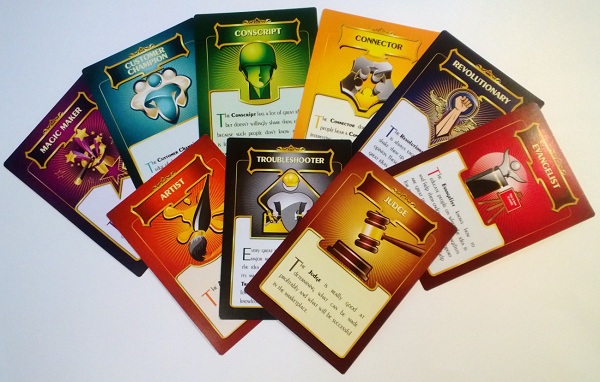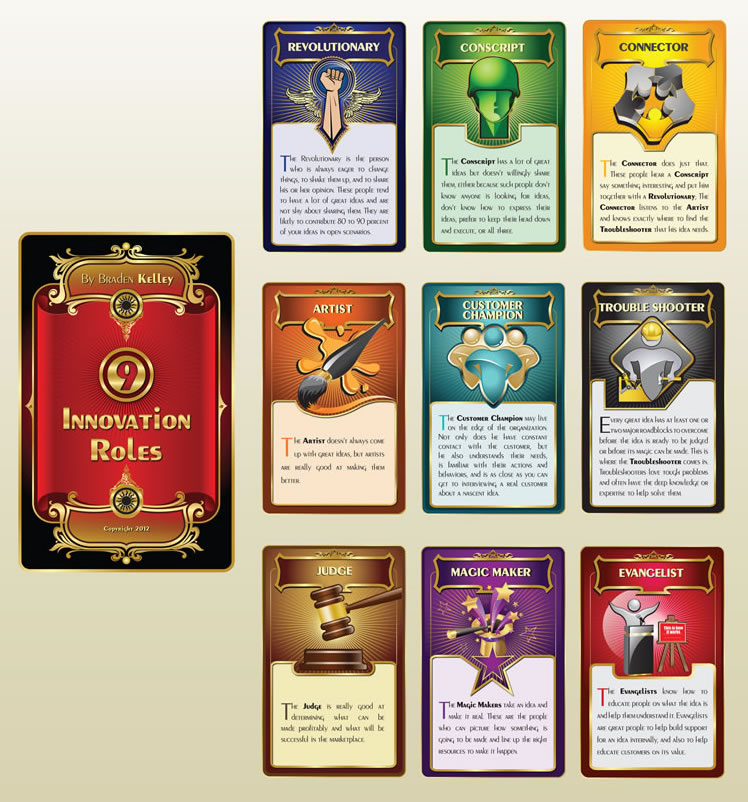As part of the leadership team for a new human-centered problem-solving offering for select Oracle customers, I’m always on the lookout for new tools to integrate into our flexible problem-solving process to help clients innovate, grow or transform.
Because our dynamic team of experienced professionals has a diverse range of knowledge, skills and abilities we’re able to co-create solutions to a wide range of business challenges and leverage a wide variety of tools. This means I’m always on the lookout for new tools to better serve our clients, in addition to pursuing my hobby of creating new tools and methodologies in my spare time throughout my career.
My passion for empowering others to succeed in overcoming their business challenges has led to the publishing of two business best-sellers Stoking Your Innovation Bonfire (John Wiley & Sons, 2010) and Charting Change (Palgrave Macmillan, 2016), and the creation of the powerful, visual and collaborative Change Planning Toolkit™, my Nine Innovation Roles™ card deck, and the Human-Centered Innovation Toolkit™ (featuring tools like The Experiment Canvas™).
I create new tools, methodologies and frameworks when I see opportunities to make people more efficient and effective in their jobs and leverage the work of others when I find others have created good solutions. I leverage the Business Model Canvas for business model prototyping, I leverage The Play-to-Win Strategy Canvas v3.0 to help people work through strategic choices, along with other tools when the challenge is appropriate.
Recently I have been looking at a variety of card decks to evaluate their suitability to use alongside design thinking and other methodologies that form the basis of the Oracle FUEL approach.
Here are a few I’ve been evaluating lately:
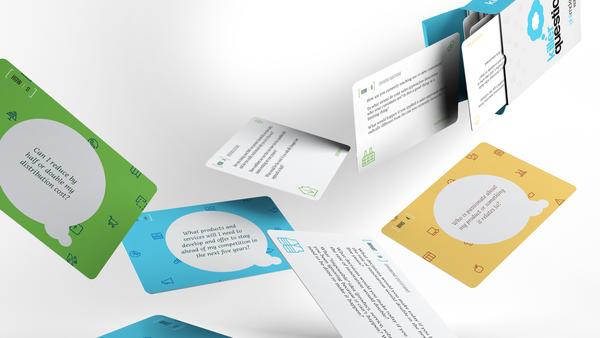
1. Killer Questions – Volume 1 from Phil McKinney, author of Beyond the Obvious and CEO of CableLabs
(More info at https://innovation.tools/)
Brainstorming is a fairly useless exercise the way that most people facilitate it. There are much more effective ways to get ideas and most of the approaches that work better share at their core a more targeted and collaborative approach. The Killer Questions card deck is composed of just that, a collection of questions if left unanswered or unexplored, could lead to blind spots and disruption opportunities for new entrants (or your competition). The questions are categorized into three types:
- Who
- What
- How
And the questions include things like:
- Who does not use my product because of my assumptions about their skill or ability
- What emotional, psychological, or status benefits could people derive from using my product?
- How could users avoid interacting with my product or service but still get the same value?
But the cards don’t just contain a single question. These are examples of guiding questions on the front of a few cards, but on the back of each card you will also find 3-5 supporting questions to help your team explore the guiding question more fully.
Overall, I consider the cards a useful tool for groups including: product teams wanting to continuously stretch themselves as they revaluate product direction, or for expanded innovation teams looking to broaden their search horizons.
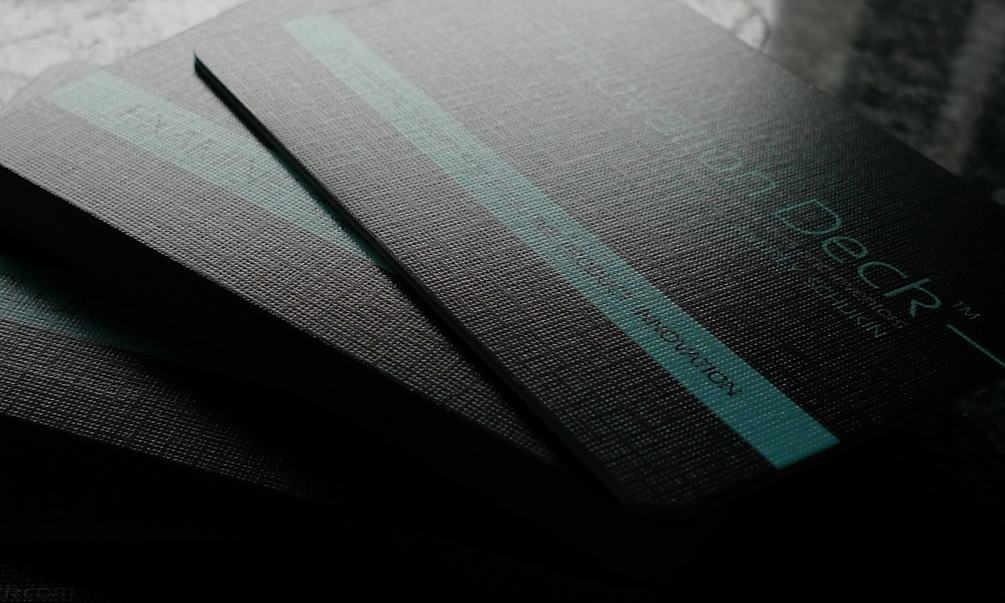
2. The Innovation Deck by Andrey Schukin, CTO at Interprefy AG
(More info at http://www.innovationfast.com/)
Where the Killer Questions deck is organized around questions, The Innovation Deck is organized around topics/tactics and triggers. For each topic/tactic there is either a set of instructions or a set of questions.
The Innovation Deck is composed of three different types of cards that will help you:
- Examine
- Explore
- Evaluate
Examine Card example:
EMOTION
- People don’t buy things they need. They buy things they want.
- How do you make sure that the product will trigger an emotional response from the customer?
- What elements of your product will make the customer want to use it?
I would almost include the triggers cards as a fourth card type, because instead of a topic and questions the cards have a collection of words to see if any of the words inspire thought or conversations rather than giving people a guiding topic or tactic.
Overall, I consider these cards as a useful tool for product teams looking at a product to challenge or stretch the existing product direction for the future.
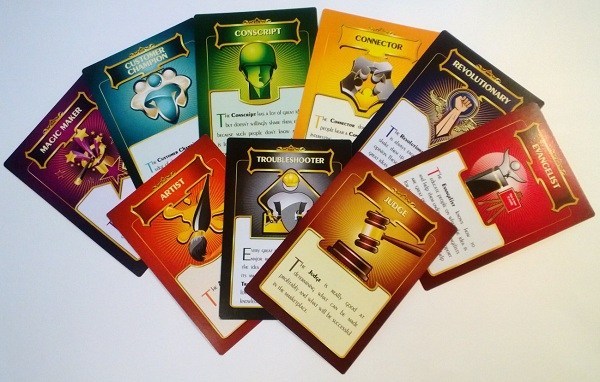
3. Nine Innovation Roles – a card deck by Braden Kelley, author of Stoking Your Innovation Bonfire
(More info at http://9roles.com)
The following is an excerpt from my book that explains some of the thinking behind The Nine Innovation Roles™:
“Too often we treat people as commodities that are interchangeable and maintain the same characteristics and aptitudes. Of course, we know that people are not interchangeable, yet we continually pretend that they are anyway — to make life simpler for our reptile brain to comprehend. Deep down we know that people have different passions, skills, and potential, but even when it comes to innovation, we expect everybody to have good ideas.
I’m of the opinion that all people are creative, in their own way. That is not to say that all people are creative in the sense that every single person is good at creating lots of really great ideas, nor do they have to be. I believe instead that everyone has a dominant innovation role at which they excel, and that when properly identified and channeled, the organization stands to maximize its innovation capacity. I believe that all people excel at one of nine innovation roles, and that when organizations put the right people in the right innovation roles, that your innovation speed and capacity will increase.”
The Nine Innovation Roles™ are:
- Revolutionary
- Conscript
- Connector
- Artist
- Customer Champion
- Troubleshooter
- Judge
- Magic Maker
- Evangelist
To make my Nine Innovation Roles™ framework accessible to as many people as possible inside organizations all around the world to explore and improve innovation team dynamics and success, I am happy to announce that I have now made the print-ready files for the cards available here for FREE download, and you can either work with the vendor I use – adMagic – or work with a local printer in your part of the world.
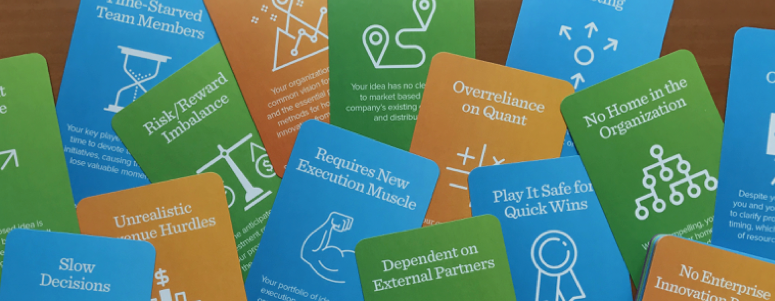
4. LPK Roadblocks by LPK, a brand and innovation consultancy
(More info at https://roadblocks.lpklab.com/)
The LPK Roadblocks deck is focused on innovation roadblocks and helping organizations whose innovation efforts might have stalled, get unstuck. There are six kinds of cards in the deck:
- Voting cards
- Question cards
- Create Your Own Roadblock cards
- Organization Roadblocks
- Project Roadblocks
- Idea Roadblocks
There are two main ways to use the cards, with selection and voting integrated into both:
- Root Cause Discovery
- Beginning, Middle and End
Organization Roadblocks include things like “Unrealistic Revenue Hurdles” and “Lip-Service Leadership,” while Project Roadblocks including things like “Untested Assumptions” and “Unclear Objectives”, while Idea Roadblocks include things like “Risk/Reward Imbalance” and “No Route to Market.”
Overall, I find these cards to be a useful tool when you run into a client that says they are struggling to innovate or that they’re not innovating as much as they’d like.
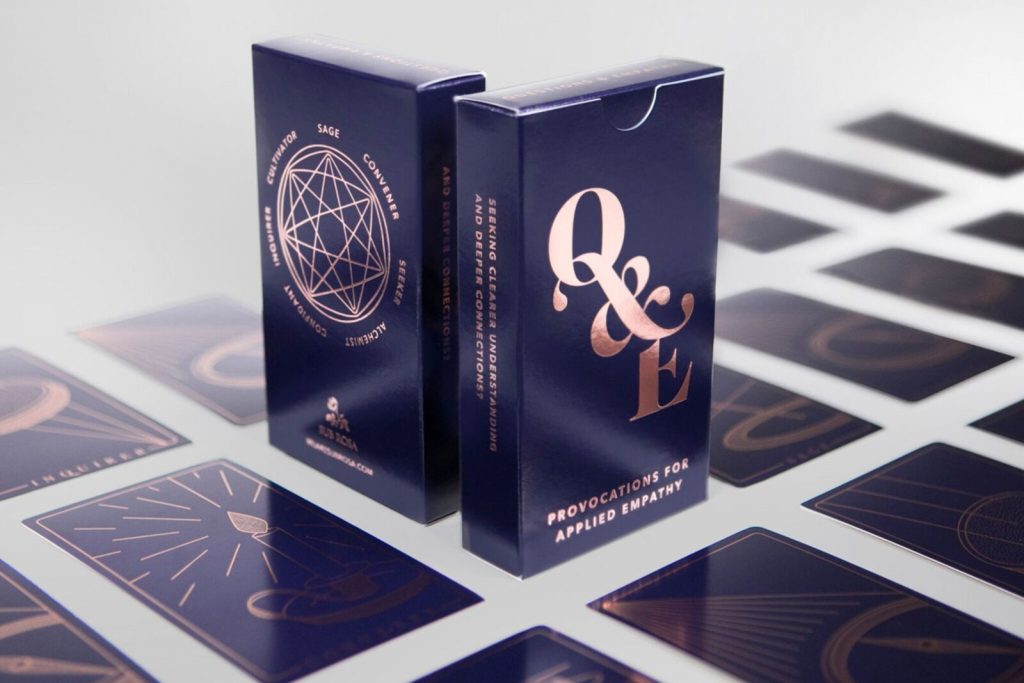
5. Questions & Empathy – a card deck by SubRosa, a brand strategy and design practice
(More info at https://www.questionsandempathy.com/)
SubRosa’s Questions & Empathy cards are composed of seven empathy archetype cards and a set of exploratory questions for each archetype. The seven archetypes are:
- Sage
- Inquirer
- Convener
- Alchemist
- Confidant
- Seeker
- Cultivator
Overall, I find these cards to be a useful tool for better understanding yourself and your own empathetic style and over time they could help you approach empathy from more angles than you would without them, but I struggle to see as is how they can actually help you practice applied empathy. The archetypes are useful, but I think I might create my own question cards to help my team better apply empathy within the empathize/understand phase of design thinking.
Conclusion
Whether you’re trying to innovate or just to build up your empathy muscles, I hope you see that there are some great, extremely portable resources to help with either. Of course, there are other card decks out there, but these will give you a few to explore and see whether there is a fit for your design thinking or innovation undertakings. If you’re pursuing a digital transformation or business transformation you can:
If you missed the links to the cards decks above, here they are again:
- Killer Questions – Volume 1
- The Innovation Deck
- Nine Innovation Roles (English/Spanish/Swedish)
- LPK Roadblocks
- Questions & Empathy

 Sign up here to get Human-Centered Change & Innovation Weekly delivered to your inbox every week.
Sign up here to get Human-Centered Change & Innovation Weekly delivered to your inbox every week.
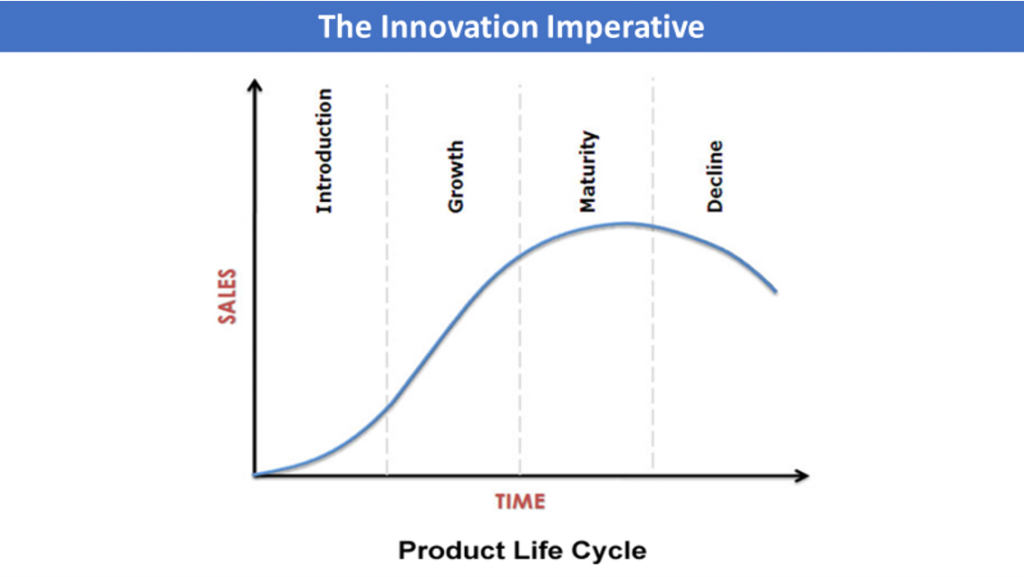
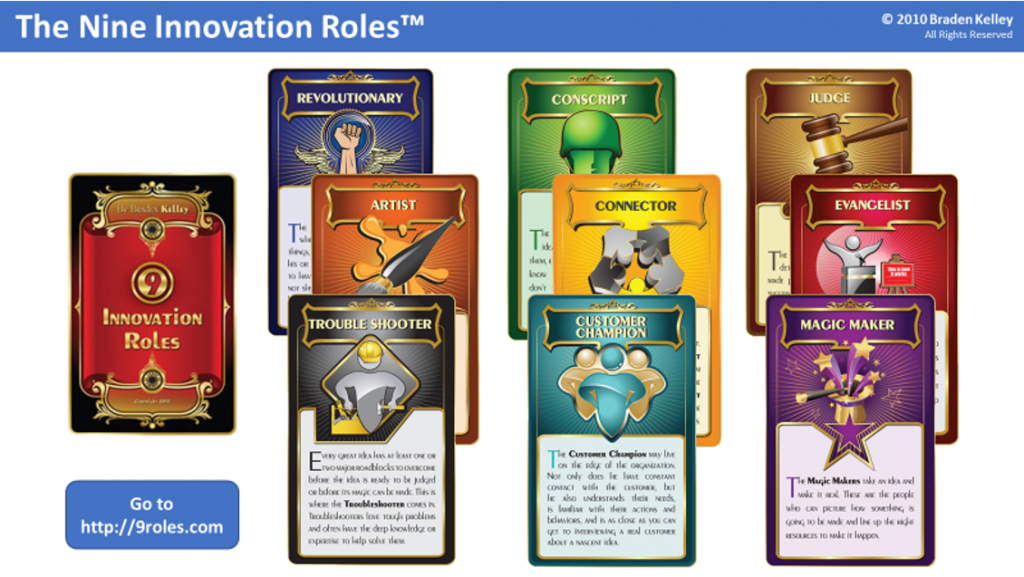
![]() Sign up here to get Human-Centered Change & Innovation Weekly delivered to your inbox every week.
Sign up here to get Human-Centered Change & Innovation Weekly delivered to your inbox every week.





 If your organization is struggling to sustain its innovation efforts, then I hope you will do the following things.
If your organization is struggling to sustain its innovation efforts, then I hope you will do the following things.


